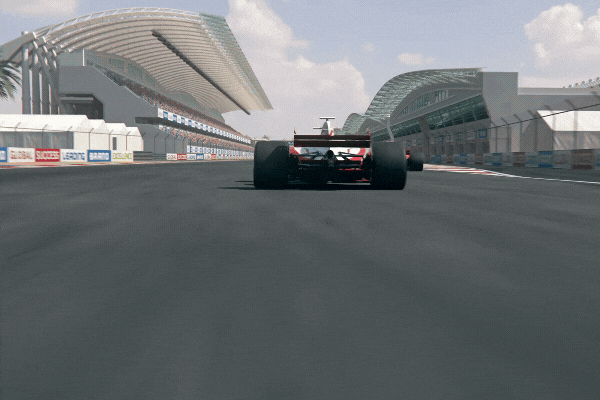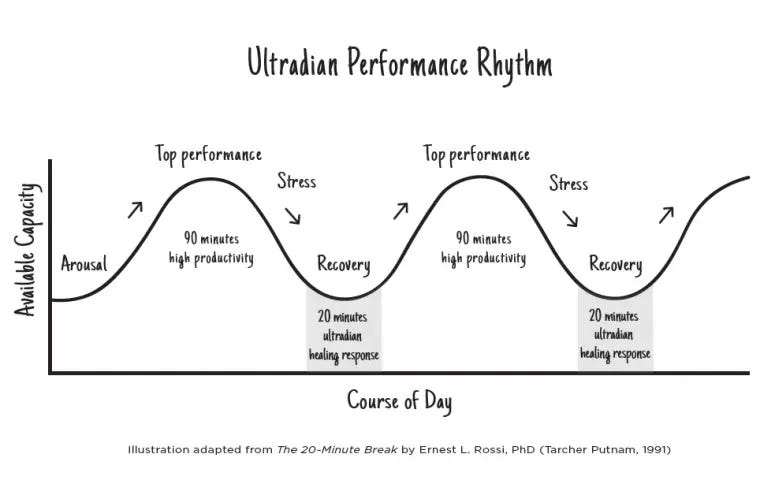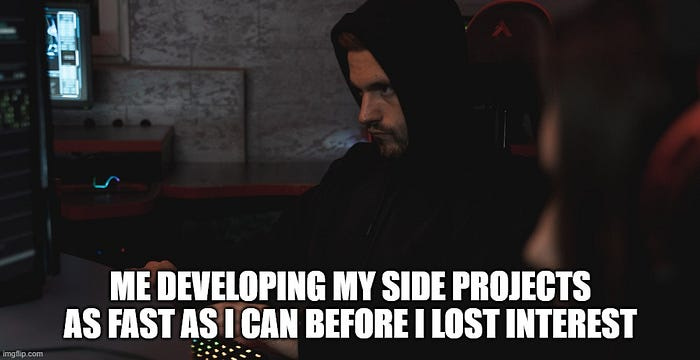Enter Flow State on Command: The Ultimate Guide to Focus and Peak Performance
I spent over 1,000 hours learning how to enter Flow State. Here's everything I know.
Here’s an uncomfortable truth:
Nobody is coming to save you; it’s time to either lock in or lose more years of your life.
I was already on pole (Formula One race)… and I just kept going. Suddenly, I was nearly two seconds faster than anybody else, including my teammate with the same car. And suddenly I realised that I was no longer driving the car consciously. I was driving it by a kind of instinct, only I was in a different dimension. It was like I was in a tunnel.
Formula One driver Ayrton Senna
Flow state is a mental state where you’re fully immersed in what you’re doing; so focused that time seems to disappear, distractions fade, and your performance feels effortless.
We all know about its benefits.
But how can we maintain focus over time?
How can we unleash a flow state every time we want?
How can we overcome the emotional changes that distract us?
Psychologist Mihály Csíkszentmihályi, who coined the term, found that people are happiest not when they’re relaxing, but when they’re in flow; often while tackling something just beyond their current abilities. In other words, your brain feels most alive not in comfort, but on the edge of challenge.
My name is David, I’m a software engineer, and I’ve been writing about Peak Performance for years.
In this article, I’m going to introduce you to the three levels of flow.
Interviewer: You have a higher IQ…
Mr. McCulloch: No! I do not. I have a happy, normal, sort of IQ. About 140.
Interviewer: Well, how come then you’ve achieved all the things you have? Great eminence in your chosen fields, hundreds of scientific papers…
Mr. McCulloch: I suppose because I’m so neurotic, I can’t go to sleep overnight because ideas trouble me. They just stay with me and they bother me… In my nervous system, something is going on that won’t let me sleep until I get a problem solved.
In 1943, Walter Pitts and Warren McCulloch proposed the first mathematical model of a neural network, the precursor of modern machine learning.
Level 1: Entry Flow (Everyday Immersion)
Lorraine was an American high school senior who dreamed of going to Spain on an exchange programme. She was the subject of the study of Csíkszentmihályi (I admit I have no idea how to pronounce that), who changed everything.
Lorraine began his week in a very happy mood, but then she learned that she couldn’t study in Spain. Her mood collapsed and stayed low whenever she was alone or in class, improving only in social settings like parties or even watching friends argue.
In a follow-up, Lorraine admitted that being with people helped distract her from disappointment, while solitude intensified it. Repeating this study with thousands worldwide, from Tokyo teens to Italian farmers, confirmed the broader pattern: people are generally happiest when socially engaged, a finding that has reshaped our understanding of happiness and how to live more fulfilling lives.
Most people imagine the good life as relaxation when the to-do list is complete, when we have achieved everything, but experiments show the opposite: we’re happiest when engaged, not when idle.
Looking at Lorraine’s example, it looks like anything that can distract us from real life can be a flow state if it is characterized by total immersion, focused attention, and time distortion. The first thing I can think of is using social media: can scrolling Instagram for hours be considered flow state?
Here’s where the definition can be blurry; on one side, you can be totally immersed, but on the other side, scrolling is passive consumption. You’re not meeting a challenge; you’re being fed endless novelty that hijacks your brain’s reward system. Afterward, you feel drained, not expanded.
And I just brought up the topic of social media precisely because eliminating it is the first step for us to achieve flow state on a day-to-day basis.
The length of time for which a person is able to concentrate on a particular activity or subject, or attention span, has been clearly decreasing with time, according to Dr. Gloria Mark, from 75 to 40 seconds in the last ten years.
For Lorraine, it was easy to enter flow while socializing and forget about Spain for a couple of hours because she was having fun with her friends, from talking to going to Go Karts. But for you, who probably want to enter flow state while being alone to work on your projects, it is a lot different. You first need some prep work.
Dr. Jo Nash, in his list of optimal conditions for flow state, mentions some interesting things:
Concentration on the task at hand is characterized by focused attention that circumvents external and internal distractions.
For super exciting activities, that’s easy to achieve. While playing video games, for example, the goal is clear, you didn’t design it, and the stimulation is so strong that you can forget about your phone for hours. But…
So, in order to achieve the most basic level of flow, I propose you try this next time you need to work on something:
Run a Dead Hour
Some years ago, when I was a student, I developed a technique called The Dead Hour. It’ll be useful for you to avoid the constant buzz of notifications, chats, and timelines.
Commit to just one hour of hard work
Leave your phone far from you, no vibration or sound
Block every distracting site on your browser
Go take a nap if you’re sleepy, you can’t be before doing a Dead Hour
Use a trigger to do this a lot of times in the future, like drinking coffee before starting
Use headphones and put on music for studying or working (no lyrics), you can also use some binaural beats.
Here’s a little story about how I reached flow when I needed it most:
Level 2: Deep Flow (High-Performance Zone)
The ultradian performance rhythm is the natural cycle of energy and focus that our bodies run through roughly every 90 minutes. In each cycle, your brain ramps up to peak alertness, then naturally dips, signaling it’s time to rest and recharge. Instead of fighting these rhythms, top performers use them: they work in 90-minute deep focus blocks, then take 15–20 minutes of real rest (walk, stretch, meditate, breathe). By syncing with this biological rhythm, you avoid burnout, protect focus, and stack more high-quality output across the day, performing better with less wasted effort.
To unlock the second level of flow, the kind that carries you for days at a time, you need to understand the patterns that shape your mind. That means working with your ultradian rhythms, and mastering the balance between skill and challenge (too easy = boredom, too hard = anxiety).
Going back to Dr. Jo Nash’s list on the optimal conditions for entering flow state:
Sense of control emerges that makes people feel they are unstoppable or like they can achieve anything (Csikszentmihalyi, 1993).
Action–awareness merging involves total absorption in the here and now such that the activity becomes second nature.
Autotelic experiences (from the ancient Greek autós, meaning “self,” and télos, meaning “result/outcome/end”) are performed for their own sake. They are intrinsically motivated behaviors that trigger the flow state (Csikszentmihalyi, 1990).
This level is about becoming more self-aware:
Understanding your triggers, realizing what distracts you, and eliminating them for a long period of time. For example, instead of closing Instagram for a Dead Hour, delete the app for a whole day. Realizing when you're tired and going to rest instead of using TikTok or watching TV.
An alert should go off in your head when you find yourself talking down to yourself, with less confidence, telling yourself you can't do it. Knowing that these bad thoughts come from a place of insecurity and only interrupt your process.
At this point, you should start meditating a lot to clear your mind and convince yourself even more that you can do it.
You should become much more responsible for your actions and let go of the victim mentality. You will realize in this process that you are the only person who can save you.
Level 3: Transcendent Flow (Life-Changing Moments)
The last bullet of the list that I want to point out is this:
Clear goals & unambiguous feedback (often from the activity itself) enable the continuous adjustment of our responses to meet the required demands of the task.
To have clear goals in life, you need daydreaming.
Daydreaming often gets a bad reputation as wasted time, but science shows it’s one of the brain’s most powerful tools. When you let your mind wander, your default mode network kicks in, the system responsible for creativity, problem-solving, and making sense of your life’s bigger picture.
Some of history’s greatest breakthroughs, from Einstein’s thought experiments to modern creative leaps, came not during focused work but while drifting in thought. Daydreaming gives your brain space to connect dots, rehearse future scenarios, and recharge focus.
Can you guess what’s the biggest enemy of daydreaming?
Social media… the infinite stream of political messages, brainrot memes, and stupid celebrity gossip. We do it because it feels good. After all, we don’t want to wander in our own thoughts. But it’s numbing our minds.
To have a clear vision of your future, you need to meditate, wander, take notes, and you need time for doing that.
Try deleting distracting social media at least for most of your day (If you don’t want to do it for several days), you’ll find peace of mind and clarity for your life.
The modern world is designed to distract you, but that only leads to dissatisfaction and mental issues. The decision is hard to make, but it’s only yours. Focus now or get stuck.







Great insights
Helpful article